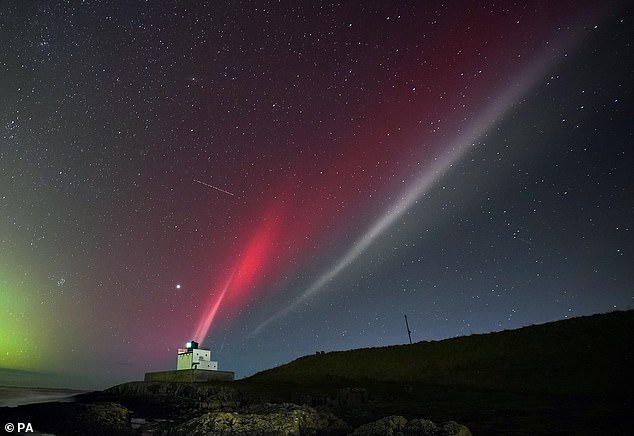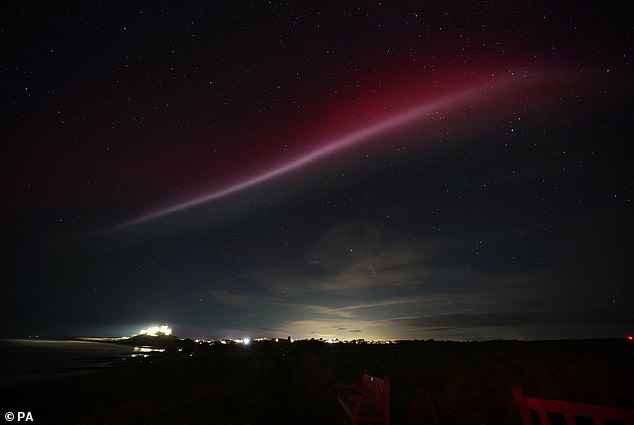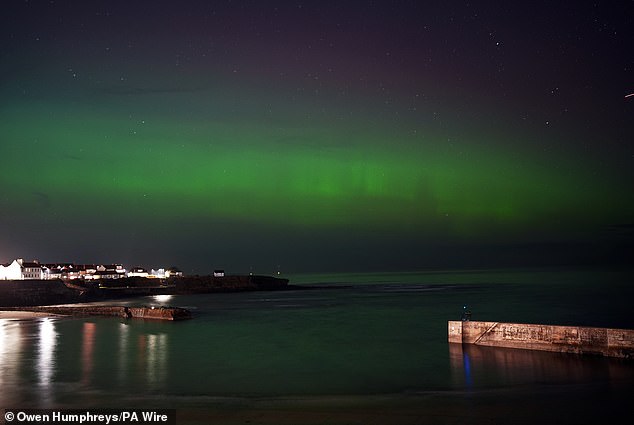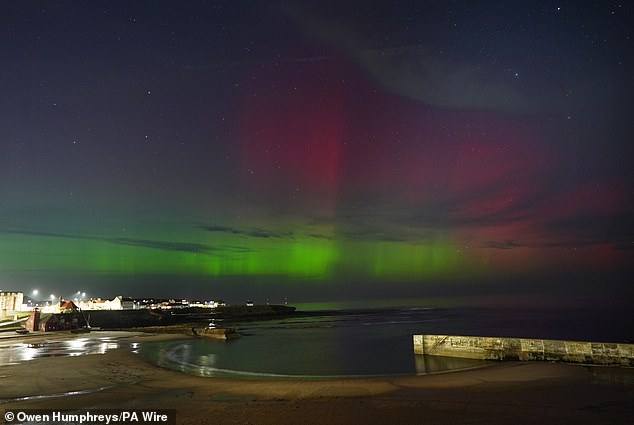What is the rare ‘Steve’ phenomenon? Inside the stunning aurora-like display that lit up the British sky
We’ve all heard of the Northern Lights.
But the night sky over Northumberland on Sunday was lit up by the Aurora’s lesser-known relation: STEVE.
The spectacle stands for ‘Strong Thermal Emission Velocity Enhancement’ and is caused by a flowing ribbon of particles entering the Earth’s atmosphere.
The ribbon is about 26 kilometers wide, 450 kilometers high and has a temperature of 3,000 degrees Celsius.
Little is known about its formation and why it can sometimes appear during an aurora display.
STEVE (pictured left) above Dunstanburgh Castle on the Northumberland coast on Monday evening

A close-up of the Steve above Dunstanburgh Castle in Northumberland on Monday evening

STEVE appeared above Bamburgh Castle in Northumberland last year

The atmospheric optical phenomenon is caused by a flowing ribbon of hot plasma breaking through Earth’s ionosphere (pictured above Bamburgh Castle last year)
While aurorae appear in an oval shape, Steve appears as a long streak. It takes 20 minutes to an hour for it to disappear.
Steve’s last sightings in Britain were in November 2023.
Scientists have suggested that it is not a normal aurora, but is actually made up of a fast-moving stream of extremely hot particles, called a sub-auroral ion drift or SAID.
Although photographs of Steve have existed for decades, it was only named Steve in 2016, following a US citizen science project funded by NASA and the National Science Foundation.
The inspiration for the name of the spectacle is said to come from a scene from the animated film Over The Hedge.
In the film, a group of animals wakes up from their hibernation and discovers what is a phenomenon for them: a large garden hedge.

The Northern Lights can be seen in the skies over Cullercoats Bay in North Tyneside on Monday evening

The Northern Lights can be seen over Cullercoats Bay in North Tyneside on Monday evening
One of the creatures says, “What is this thing?” while another responds, “I’d be a lot less afraid of it if I only knew what it’s called.”
A squirrel then recommends calling the phenomenon Steve, because Steve is less scary.
Scientists later developed the acronym Strong Thermal Emission Velocity Enhancement.
Meanwhile, the Northern Lights were spotted in Britain on Monday evening and early Tuesday morning.
And more observations are possible in the coming days, cloud cover permitting, as solar activity remains high.
